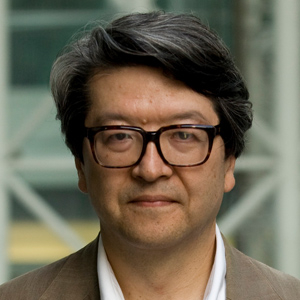- Article
- Macroeconomics, Economic Policy
3. Two Views of Speculation in Financial Markets
April 2, 2010
Friedman’s Darwinian Model vs. Keynes’ Beauty Contest Model
Milton Friedman would claim that the professional speculators who bear the risks of ordinary producers and consumers have a stabilizing influence on the way markets function.
“People who argue that speculation is generally destabilizing seldom realize that this is largely equivalent to saying that speculators lose money,” he asserts, “since speculation can be destabilizing in general only if speculators on average sell when the [commodity] is low in price and buy when it is high.” 1 Destabilizing speculators are an irrational bunch of people who sell commodities when they are cheap, driving prices down even lower, or buy commodities when they are expensive, driving prices up even higher. But they have to pay for their irrationality and will sooner or later lose their money. The Darwinian mechanism of the survival of the fittest kicks in and weeds them out of the market. The only speculators who can survive in a market are those who behave rationally, buying low and selling high. So markets are stable even in the face of speculation—indeed, speculation makes markets more stable, further strengthening the “invisible hand” mechanism of Adam Smith.
A fundamental objection to Friedman’s view of speculation, however, was put forward long before his time. It is the “beauty contest” model proposed by Keynes in Chapter 12 of The General Theory. Instead of the usual sort of (now politically incorrect) beauty contest, where women parade in front of a panel of judges, who pick one of them to be Miss Something-or-other based on a certain set of standards, Keynes’ version is a post-modern contest involving the full participation of the public as real competitors. Competitors are asked to choose faces from a hundred photographs in a newspaper, the prize being awarded to the one whose choice most nearly corresponds to the average choice of the competitors as a whole. Anyone who wants to win has to pick, not the faces that conform to an objective set of beauty standards or to his or her own subjective opinion of who is prettiest, “but those which he or she thinks likeliest to catch the fancy of the other competitors.” Indeed, if all the other competitors are also aiming to win the prize, they are also looking at the problem from the same point of view.
“It is not,” Keynes then argued, “a case of choosing those which, to the best of one’s judgment, are really the prettiest, nor even those which average opinion genuinely thinks the prettiest. We have reached the third degree where we devote our intelligences to anticipating what average opinion expects the average opinion to be. And there are some … who practise the fourth, fifth and higher degrees.” (Keynes, The General Theory , p. 154.) In the end, the only reason a particular face is selected as the prettiest is that every competitor believes every other competitor believes she will be chosen as the prettiest, without any support from reality, either objective or subjective. The prettiest is the prettiest merely because she is selected as the prettiest. What we see here is the working of the “bootstrapping” logic of Baron Münchausen, who claimed to have pulled himself out of a swamp by tugging on his own bootstraps.
Keynes likened the competitors in this post-modern beauty contest to professional speculators in financial markets. He argued that the energies and skills of the professional speculators are largely concerned not with making superior forecasts of the probable yield of an investment over a long period of years, but with predicting market prices a short time ahead of the general public. Indeed, “this battle of wits” to anticipate changes in the psychology of the market ahead of time, Keynes continued, “does not even require gulls amongst the public to feed the maws of the professional; — it can be played by professionals among themselves.” (pp. 154-156.) And, as soon as a legion of professional speculators starts the battle of wits with one another, prices these markets become inherently precarious. They are subject to huge sudden fluctuations in response to minor bits of news or unreliable rumors, totally apart from the fundamental supply-demand conditions in the real economy. If everybody thinks that everybody thinks that prices will rise, purchase orders come rushing in, and prices do indeed surge—a speculative bubble forms. Conversely, if everybody believes that everybody believes that prices will fall, the sell orders pile up, and prices plunge—a bust.
The key point here is that bubbles and busts look totally irrational at the macroscopic level. Yet the behavior of individual speculators—buying when they expect prices to rise and selling when they expect them to fall—is perfectly rational on the individual level, and indeed profitable—at least in the short term. As Keynes put it, “this behaviour is not the outcome of a wrong-headed propensity. … For it is not sensible to pay 25 for an investment of which you believe the prospective yield to justify a value of 30, if you also believe that the market will value it at 20 three months hence.” (p. 155.) Macroscopic irrationality is not necessarily a reflection of individual irrationalities but often an unintended aggregate outcome of individual rationalities.
1 Milton Friedman, “The Case for Flexible Exchange Rates,” in Essays in Positive Economics (Chicago: University of Chicago Press, 1953), p. 175. 8

